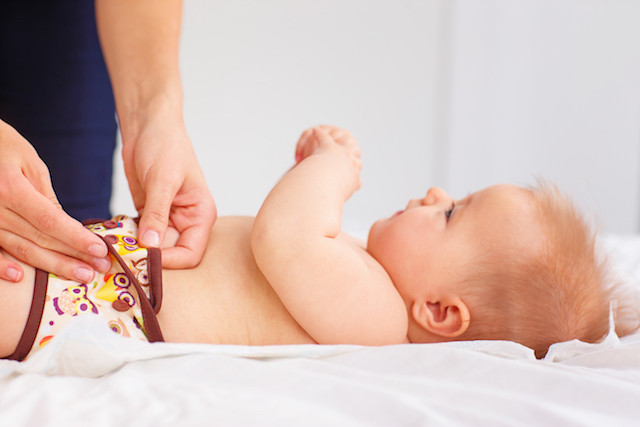Already passed by local councils in the northern region--which includes the communes of Wiltz, Winseler, Boulaide, Esch-sur-Sûre and Lac de la Haute Sûre--forms have been available as of 1 January 2019 for residents to apply for maximum €80 towards the purchase of a set of reusable nappies and/or professional consultation on how to use them.
“It’s great news for the north,” says Stéphanie Empain, who serves as a déi Gréng deputy but also runs her own nappy consultation business, Bamboo and Cotton. Together with a colleague she had personally helped push the initiative, taking inspiration from Mamer, which she says was the first commune to offer a programme of that sort within the grand duchy.
Mamer’s subsidies are a bit different: a one-time allowance of €55 is available for the renting of reusable nappies and/or an annual (renewable) subsidy of €100 for the purchase of a set of them, provided they cost at least €300. In both cases the child for whom the nappies are required must be under 3 years old.
A growing trend
Empain started her business in 2015, the same year she and three others completed a cloth nappy consulting training programme in Germany. “Until three or four years ago, cloth diapers weren’t that attractive, only some hip people were using them…unlike in the US or Great Britain, where you find more parents getting back into cloth.”

Stéphanie Empain: "Waste reduction must be an important topic for all communes." Photo: Stéphanie Empain
But the trend in Luxembourg might just be growing: Empain says there are now around 10 consultants operating in the grand duchy. She’s also noticed an uptick in her Facebook group, Stoffy Dokessen ze Lëtzebuerg (for parents using cloth nappies), and she does her best to answer questions in other mums’ groups to allay fears and address misconceptions related to cloth nappies.
“Some are interested [in making the switch] but have images in mind of someone in the 1940s having to wash diapers by hand,” she says with a laugh. “If you’ve had a small baby and used disposable diapers, you still end up washing clothes and sleeping bags several times a day [because of accidents], so what are you doing to their clothes you can do with diapers as well. Plus we have washing machines!”
Health, environmental and financial benefits
For those already sold on using cloth nappies, they are a win-win. Nappilla.lu is another online shop, run by Sandra Siebenaller and Sébastien Salomon, which sells not only cloth nappy consultation and products, but other organic hygiene and feminine products.
Salomon says that they initially provide a consultation of just over an hour and that “once everything is in place [for using cloth nappies], it’s easy.” Some of their clients tested cloth nappies for one month and then “around 95% of them switch to it.”
Just like Empain, they make the argument about costs--on one of their company brochures, they estimate washable diapers to cost around €800 for a child between 0-2 years of age, versus around €1,600 for disposable ones. The cost is reduced further for the second child, since they can be reused.
And the ecological argument is equally convincing: it’s estimated that until the age of 2, children go through 4,000-6,000 disposable nappies, the equivalent of about one tonne of waste, compared to just 20-30 for those using reusable ones.
When Salomon talks about having worked with around 50 families, he notes that could be the equivalent of up to 50 tonnes of waste avoided. However, he says that even if people decide to use washable nappies only at home but disposable ones when they’re on-the-go, this is still a “good compromise”.
What’s more, given that disposable nappies have recently been in the news for chemicals “exceeding safety levels”, per the BBC, both Salomon and Empain agree that often a cure for nappy rashes is simply changing to a cloth version.
So how can parents encourage communes to set up similar programmes? “They can contact their communes, present them with a list of communes who already joined,” Empain says. “They can ask a nappy consultant to help them in their endeavours, perhaps join them to present the advantages of cloth nappies to communal authorities. After all, waste reduction must be an important topic for all communes.”
